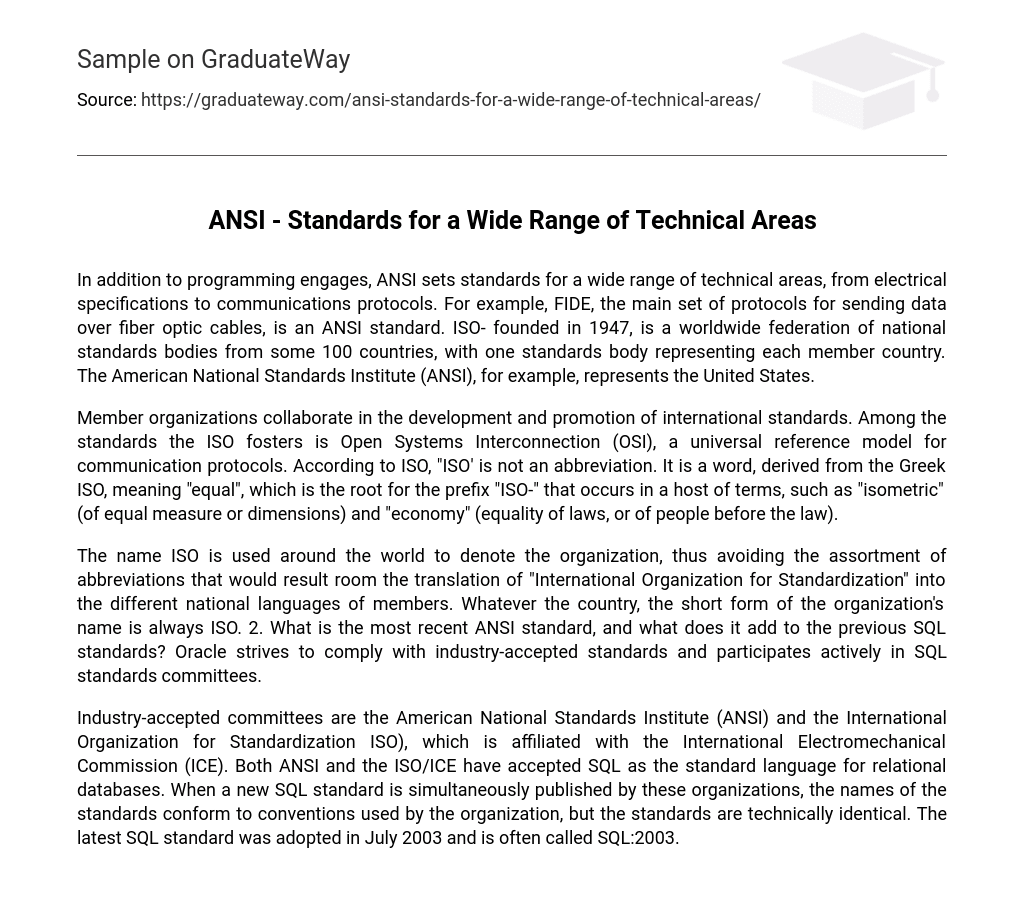In addition to programming engages, ANSI sets standards for a wide range of technical areas, from electrical specifications to communications protocols. For example, FIDE, the main set of protocols for sending data over fiber optic cables, is an ANSI standard. ISO- founded in 1947, is a worldwide federation of national standards bodies from some 100 countries, with one standards body representing each member country. The American National Standards Institute (ANSI), for example, represents the United States.
Member organizations collaborate in the development and promotion of international standards. Among the standards the ISO fosters is Open Systems Interconnection (OSI), a universal reference model for communication protocols. According to ISO, “ISO’ is not an abbreviation. It is a word, derived from the Greek ISO, meaning “equal”, which is the root for the prefix “ISO-” that occurs in a host of terms, such as “isometric” (of equal measure or dimensions) and “economy” (equality of laws, or of people before the law).
The name ISO is used around the world to denote the organization, thus avoiding the assortment of abbreviations that would result room the translation of “International Organization for Standardization” into the different national languages of members. Whatever the country, the short form of the organization’s name is always ISO. 2. What is the most recent ANSI standard, and what does it add to the previous SQL standards? Oracle strives to comply with industry-accepted standards and participates actively in SQL standards committees.
Industry-accepted committees are the American National Standards Institute (ANSI) and the International Organization for Standardization ISO), which is affiliated with the International Electromechanical Commission (ICE). Both ANSI and the ISO/ICE have accepted SQL as the standard language for relational databases. When a new SQL standard is simultaneously published by these organizations, the names of the standards conform to conventions used by the organization, but the standards are technically identical. The latest SQL standard was adopted in July 2003 and is often called SQL:2003.





